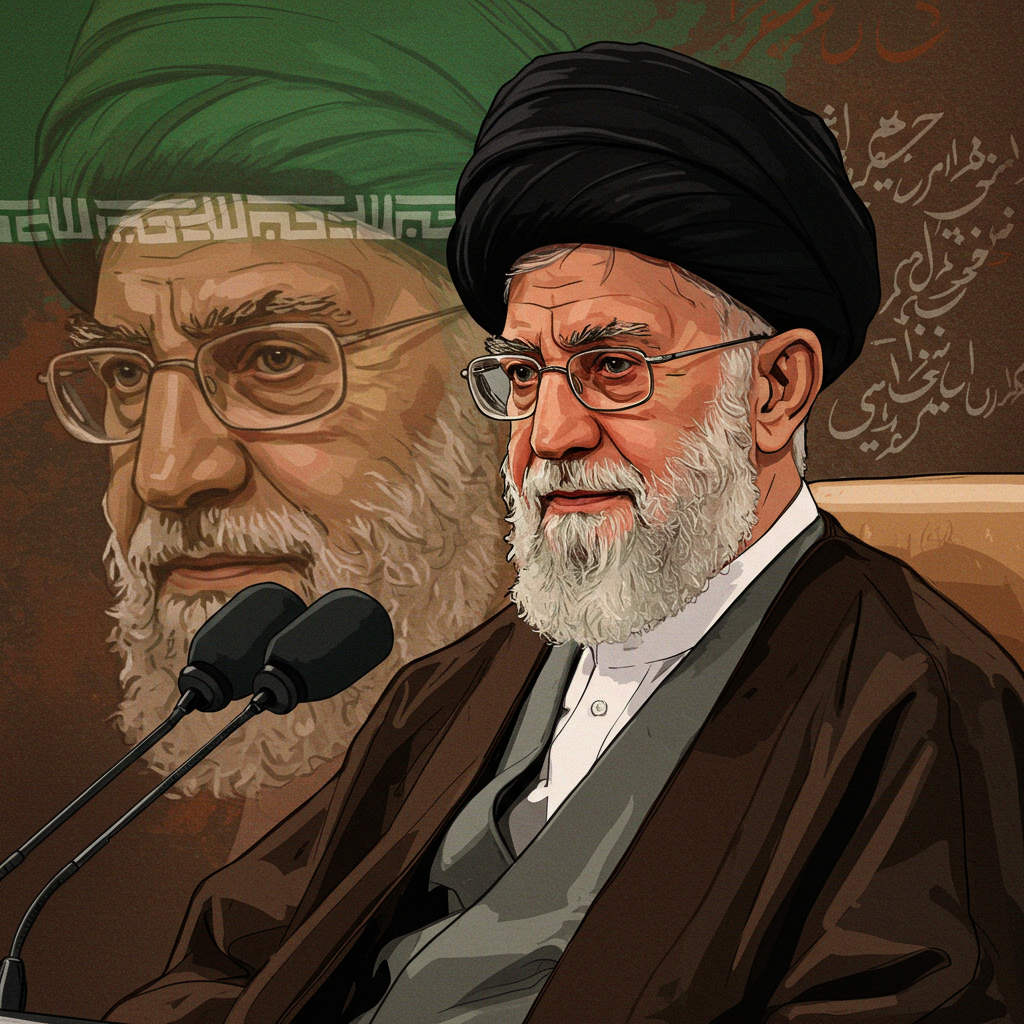As Iran’s Supreme Leader, Ayatollah Ali Khamenei, reportedly emerges from nearly two weeks in a secret bunker during the recent conflict with Israel and the United States, he faces a nation dramatically altered by war and simmering discontent. Believed to have been incommunicado for fear of assassination by Israel, the 86-year-old leader returns to a landscape marked by destruction, economic strain, and deepening internal pressures.
While state media will likely portray the conflict’s outcome as a victory, the reality on the ground paints a different picture. The war has left Iran significantly weakened, impacting its military, economy, and political stability.
The Heavy Toll of Conflict
The conflict inflicted substantial damage. Israel swiftly gained control of vast swathes of Iran’s airspace, targeting military infrastructure and resulting in the deaths of top commanders in the Revolutionary Guard and the army. While the full extent of military degradation remains debated, repeated strikes suggest a significant blow to the power built over years at immense national cost.
Concerns also surround Iran’s nuclear program, a source of nearly two decades of sanctions costing the nation hundreds of billions of dollars. Known facilities were reportedly damaged by air strikes, though assessments of the exact setback vary significantly. While U.S. officials claimed facilities were “obliterated,” leaked intelligence suggested a much shorter delay of just “months,” and the head of the International Atomic Energy Agency (IAEA) described the damage as “significant” but highlighted uncertainty about Iran’s uranium stockpile.
Despite these setbacks, anxieties persist regarding Iran’s potential to rush towards developing a nuclear bomb. Experts estimate Iran’s stockpile of 60% enriched uranium is sufficient for several bombs if further refined. Concerns are heightened by Iran’s announcement of a new secret enrichment facility and the parliament’s push to reduce cooperation with the IAEA, potentially moving closer to exiting the Nuclear Non-Proliferation Treaty (NPT) under pressure from hardliners.
One military asset that appears to have largely survived the onslaught is Iran’s extensive network of ballistic missile silos, hidden in tunnels under mountains. Israel estimated Iran possessed around 2,500 surface-to-surface missiles, with potentially 1,500 remaining – a key concern for Israel, the US, and regional powers given their demonstrated destructive capability.
Public Blame and Economic Hardship
A significant portion of the Iranian population is likely to hold Ayatollah Khamenei, who assumed leadership in 1989, personally responsible for steering Iran onto a collision course with Israel and the U.S. This path, fueled by the ideological aim of destroying Israel (a goal many Iranians don’t support) and the belief that nuclear status would grant invincibility, has brought considerable ruin. Decades of crippling sanctions have transformed a former top oil exporter into a struggling nation battling poverty and reduced access to basic goods.
The economic strain, exacerbated by the conflict, is a major source of public frustration. Experts warn that if the regime struggles to supply essential goods and services, anger could deepen significantly, potentially taking root well after the immediate hostilities end.
Internal Dissent and the Succession Question
The pressures facing the regime are not confined to the streets. Murmurs of dissent have reportedly emerged at the top. During the war, some former regime figures reportedly urged influential religious scholars in Qom, who are separate from the political leadership, to intervene and advocate for a change in leadership. This indicates significant disagreements within the ruling elite.
Adding urgency to the situation is the question of succession for the 86-year-old Supreme Leader. A committee appointed by Khamenei to identify his successor has reportedly increased its activity following the waves of strikes. Two names have reportedly surfaced as leading contenders:
Mojtaba Khamenei: The Supreme Leader’s 56-year-old son, who teaches theology in Qom. Described as a hardliner aligned with his father, he was sanctioned by the U.S. in 2019 for representing the Supreme Leader’s interests without an official elected position and working closely with the Revolutionary Guard on domestic and regional objectives.
Hassan Khomeini: The 53-year-old grandson of Ayatollah Ruhollah Khomeini, the founder of the Islamic Republic. He is viewed as more reform-minded and allied with factions favoring eased restrictions. While not as embedded in the inner circle as Mojtaba, his lineage commands respect. He has publicly warned of a “crisis of rising popular dissatisfaction” due to poverty.
While no final decision has been made, and Khamenei himself retains the ultimate authority, the increased activity around succession highlights the regime’s awareness of its uncertain future.
A Society in Conflict and Fear
Iranians have grappled with complex emotions during the recent hostilities, torn between defending their country and their deep-seated animosity towards the regime. Solidarity among citizens was evident, with people helping each other amidst bombardments – an act of national unity focused on mutual aid rather than defense of the ruling establishment.
While many Iranians yearn for regime change, the prospect of it being engineered by foreign powers, particularly through military conflict, is met with apprehension. Experts point to Iran’s vast diversity and the lack of a strong, organized internal opposition (decimated by Khamenei over decades) as reasons why a sudden collapse could lead to chaos and potential balkanisation, rather than a smooth transition. There is a palpable fear among ordinary Iranians of their country descending into devastation, similar to conflicts seen elsewhere in the region.
Amidst this uncertainty, there is widespread anti-war sentiment across Iranian society, voiced by diverse groups from teachers’ associations to political prisoners. However, the regime, wounded and potentially humiliated by the conflict, is also feared to be turning its anger inward. Reports indicate a crackdown on perceived dissent, with hundreds arrested and several executed recently on charges of spying for Israel.
The Fragile Path Ahead
With a fragile ceasefire in place, few in Iran believe the respite will last. The future remains highly uncertain. The U.S. has signaled it doesn’t seek regime change and that its military action is concluded, potentially encouraging Iran to limit retaliation. However, the risk of renewed conflict or asymmetrical Iranian responses remains high.
As Ayatollah Khamenei re-emerges to a nation battered by war, grappling with economic hardship, internal dissent, and the looming question of succession, the challenges are immense. The path ahead for Iran is fraught with peril, and the outcome of this new era remains unclear.



